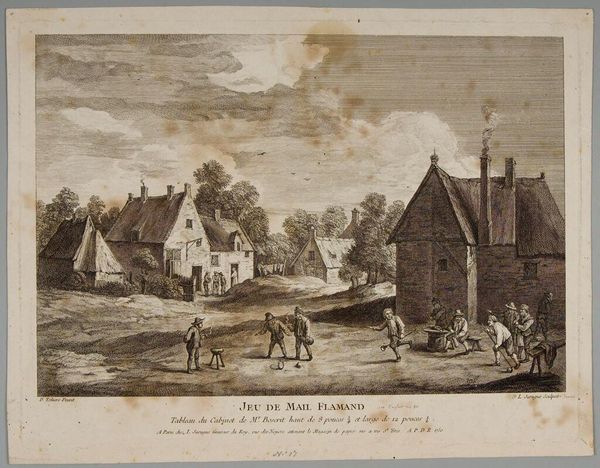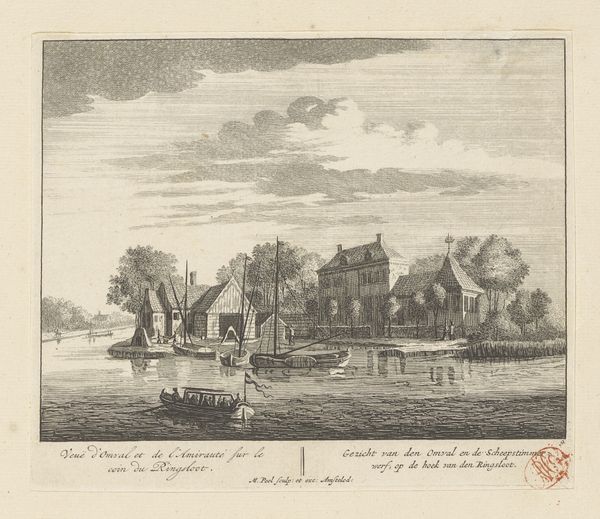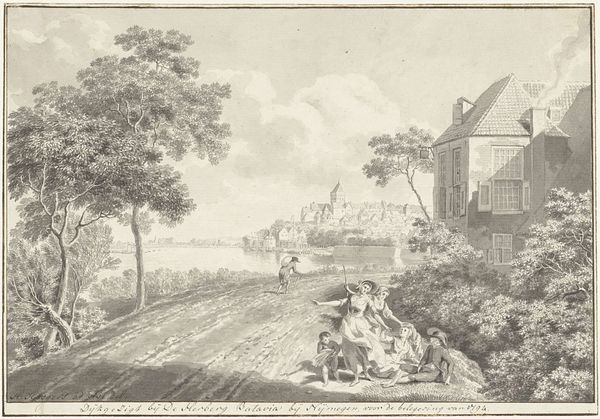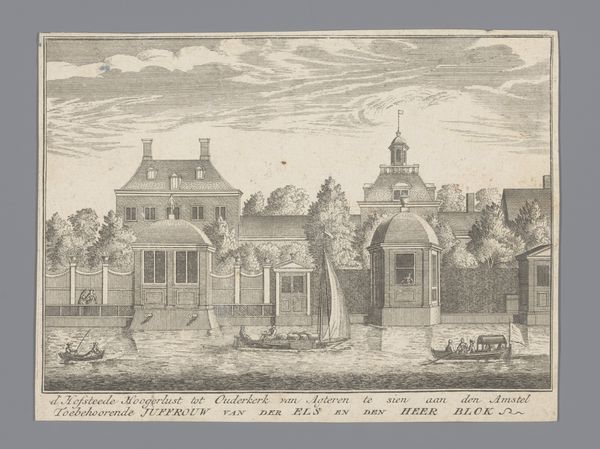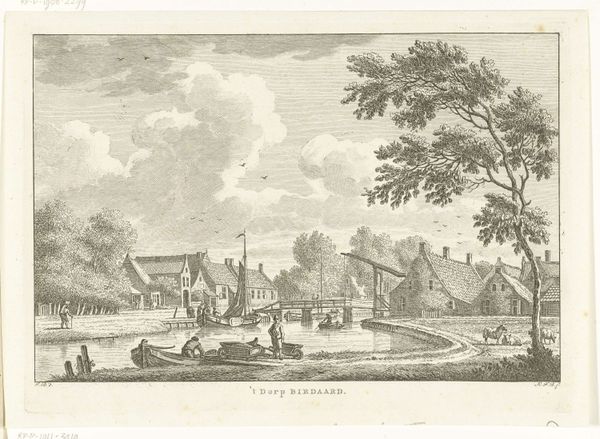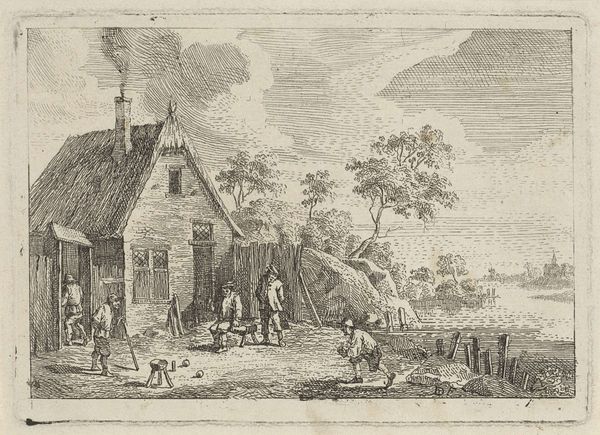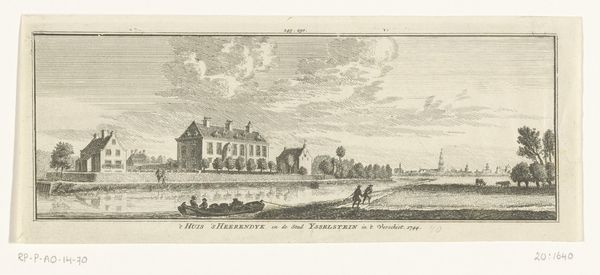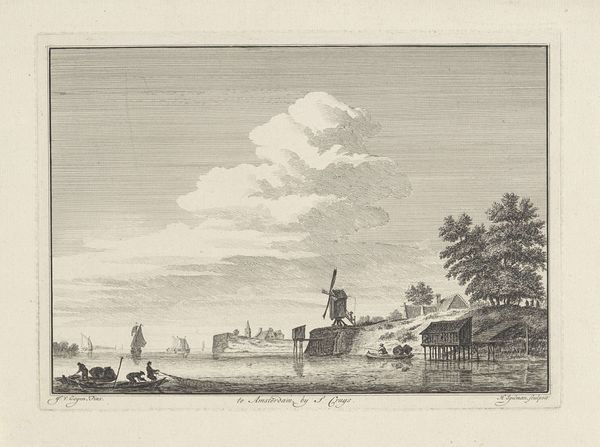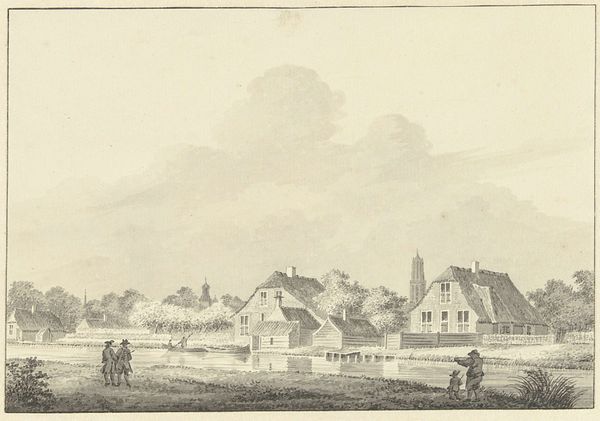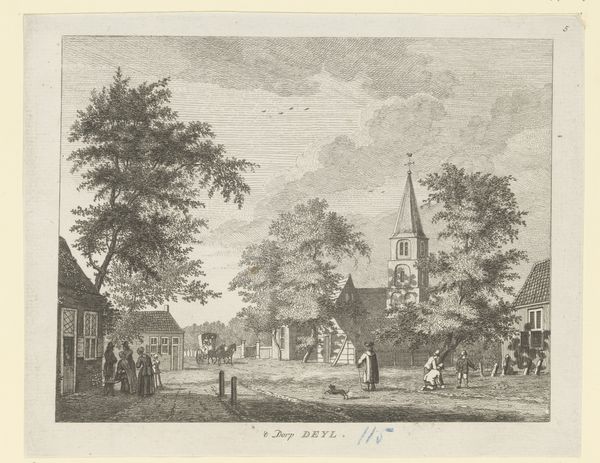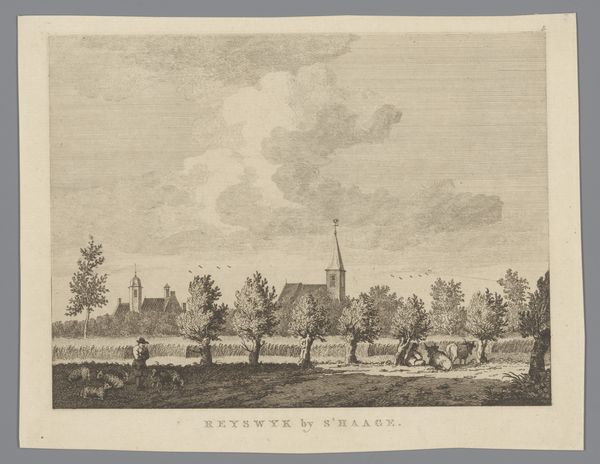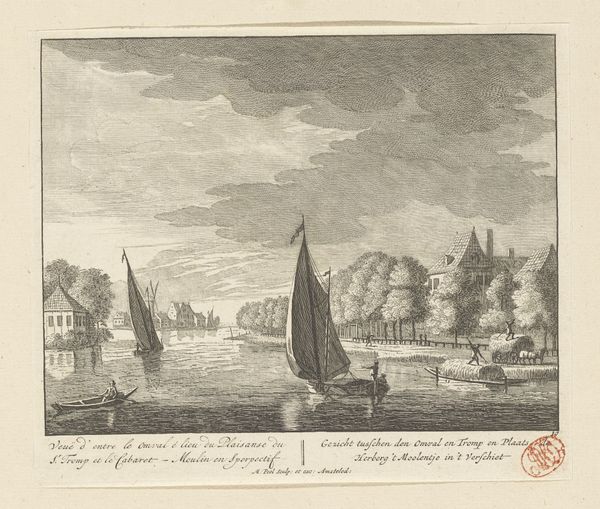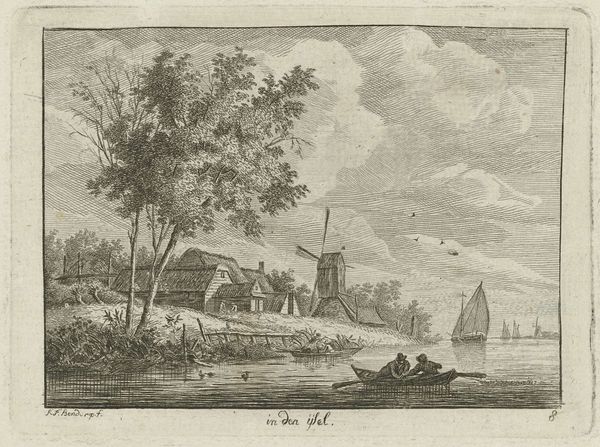
print, engraving
#
narrative-art
#
dutch-golden-age
# print
#
old engraving style
#
landscape
#
cityscape
#
engraving
#
realism
Dimensions: height 170 mm, width 200 mm
Copyright: Rijks Museum: Open Domain
Curator: Welcome to the Rijksmuseum. We are standing before Hermanus Petrus Schouten's "Het dorp Wilnis," an engraving from the late 18th or early 19th century. Editor: It strikes me as overwhelmingly idyllic at first glance, almost a fabrication of tranquility. The monochromatic scheme certainly contributes to that sensation. Curator: Indeed, Schouten's work deploys a masterful orchestration of line and tone. Notice the detailed rendering of the village architecture, sharply contrasted with the looser, more atmospheric treatment of the sky. Semiotically, the church steeple signifies stability and order, central to this community's visual language. Editor: Yet, the focus seems less on grand structures and more on the human activities occurring along the water's edge. Fishing, leisurely conversation...it presents a scene of everyday life meticulously rendered through labor-intensive printmaking. Considering the engraving process—the copper plate, the acid etching—it speaks volumes about craft traditions and the means of producing reproducible images in that era. Curator: The formal composition guides the viewer's eye through distinct planes, creating a sense of depth despite the limited tonal range. Observe the delicate hatching techniques used to define forms and simulate light; this contributes to a sense of unified pictorial space. Editor: While technically proficient, what of its social function? Was this a commissioned piece, celebrating a specific place for a patron? Or an attempt to romanticize rural life for a burgeoning urban audience? The material context shapes how we receive this image, as does the probable access to or ownership of the final print. Curator: Undoubtedly, your point about the broader social implications is astute. We can appreciate how the artist employs realism to achieve specific formal ends, and the narrative qualities offer a unique visual interpretation of 18th-century village life. Editor: Agreed. Exploring the confluence of material production and representational strategies offers compelling insights into the era. The very act of translating this place, Wilnis, into reproducible image fundamentally reshapes its relationship to us as viewers, even now.
Comments
No comments
Be the first to comment and join the conversation on the ultimate creative platform.
